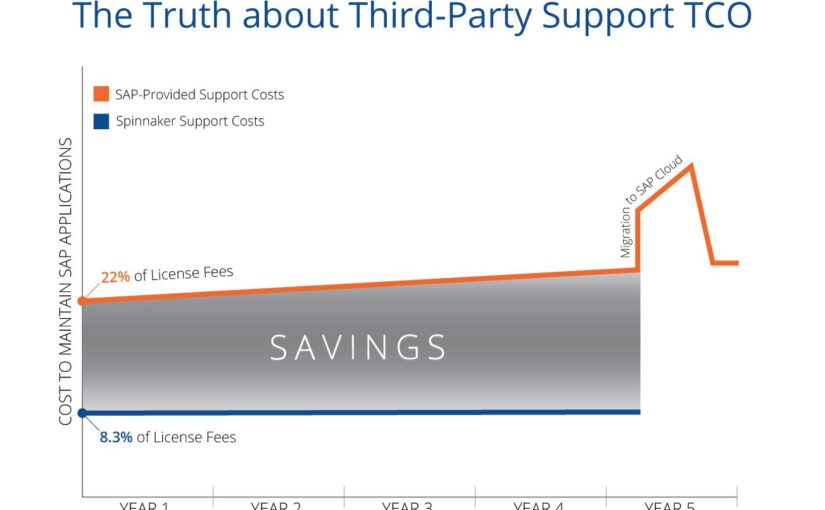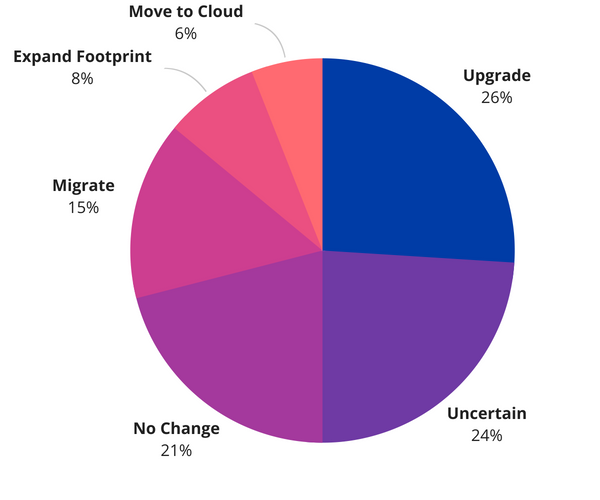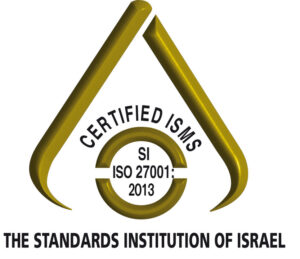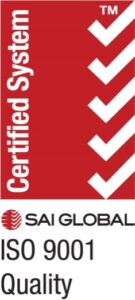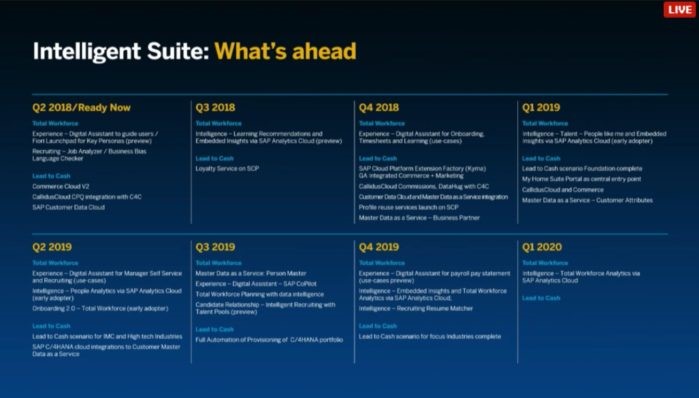June 28, 2018 | Karen Blazek | Director, Product Marketing
According to SAP, a customer must retain SAP-provided support to achieve the lowest long-term total cost of ownership (TCO). However, in our experience, the assumptions SAP uses to make this case don’t stand up to serious scrutiny.
Reducing Your SAP Total Cost of Ownership
SAP’s argument predicates on myths that third-party support customers:
- Will face high on-premise reimplementation costs upon return to SAP in 1.5 – 3 years
- Are subject to pay back maintenance fees
- Can’t adapt applications to business changes without access to SAP patches and upgrades
- Face higher reimplementation costs due to over-customization of the SAP environment
The truth is that Spinnaker Support’s SAP customers average 4.3 years with third-party support, and when they’ve returned to SAP, they paid no reimplementation costs or maintenance back fees. SAP ignores these facts to calculate a comparative TCO analysis, and you should challenge their assertions. SAP customers should see the full picture.
Calculating ERP Total Cost of Ownership
Let’s take a closer look at what customers need to measure when considering their ERP TCO. More easily measured are the direct costs which may include the planning and selection process, initial license fee, platform and infrastructure cost, project implementation cost, cutover and post-go-live support, upgrade costs, and continuous annual support costs. Difficult to classify and calculate accurately, but very highly important to consider when making purchasing decisions are indirect costs such as implementing future enhancements, operating costs (human labor/energy), change management (process changes/training), and security/ disaster recovery strategy.
For example, any type of computer software will include a variety of direct and indirect costs that affect the total cost of ownership. The hardware, operating system, supporting software, installation, training, repairs, maintenance, upgrades, and technical support associated with the ERP software package are all a part of the purchase price.
Another great example is on-premise applications purchases that involve large upfront capital costs with incremental increases as companies add users and modules. Added to the upfront costs are annual support fees, which are typically 20-25% of the total value of the software. As the number and cost of user licenses and modules increase and are steadily increased by the software vendors, so does the total cost of ownerships. With the substantial annual support costs, companies may pay double their software spend every four to five years.
It is vitally important to take all costs, both direct and indirect, into account when justifying a new ERP system or a migration to cloud services, and balance them against your ROI. If, for example, your landscape is highly customized, an on-premise solution may be more cost-effective than migrating to a cloud solution. However, it’s the long-term cost associated with annual support that is often not accounted for up front.
SAP Support TCO: Vendor vs Spinnaker Support
Spinnaker Support will always offer a lower ongoing support TCO than SAP-provided support. As depicted in the chart below, Spinnaker Support customers, most of whom stay an average of 4 – 5 years, save an average of 62% in support costs. Cutting SAP support fees by more than half has a direct impact on TCO. In addition, Spinnaker Support customers have access to a dedicated team of engineers who deliver tailored fixes, rather than one-size-fits-all patches. This ensures high-level performance through changes in business conditions and surrounding technology environment, indirectly influencing TCO.
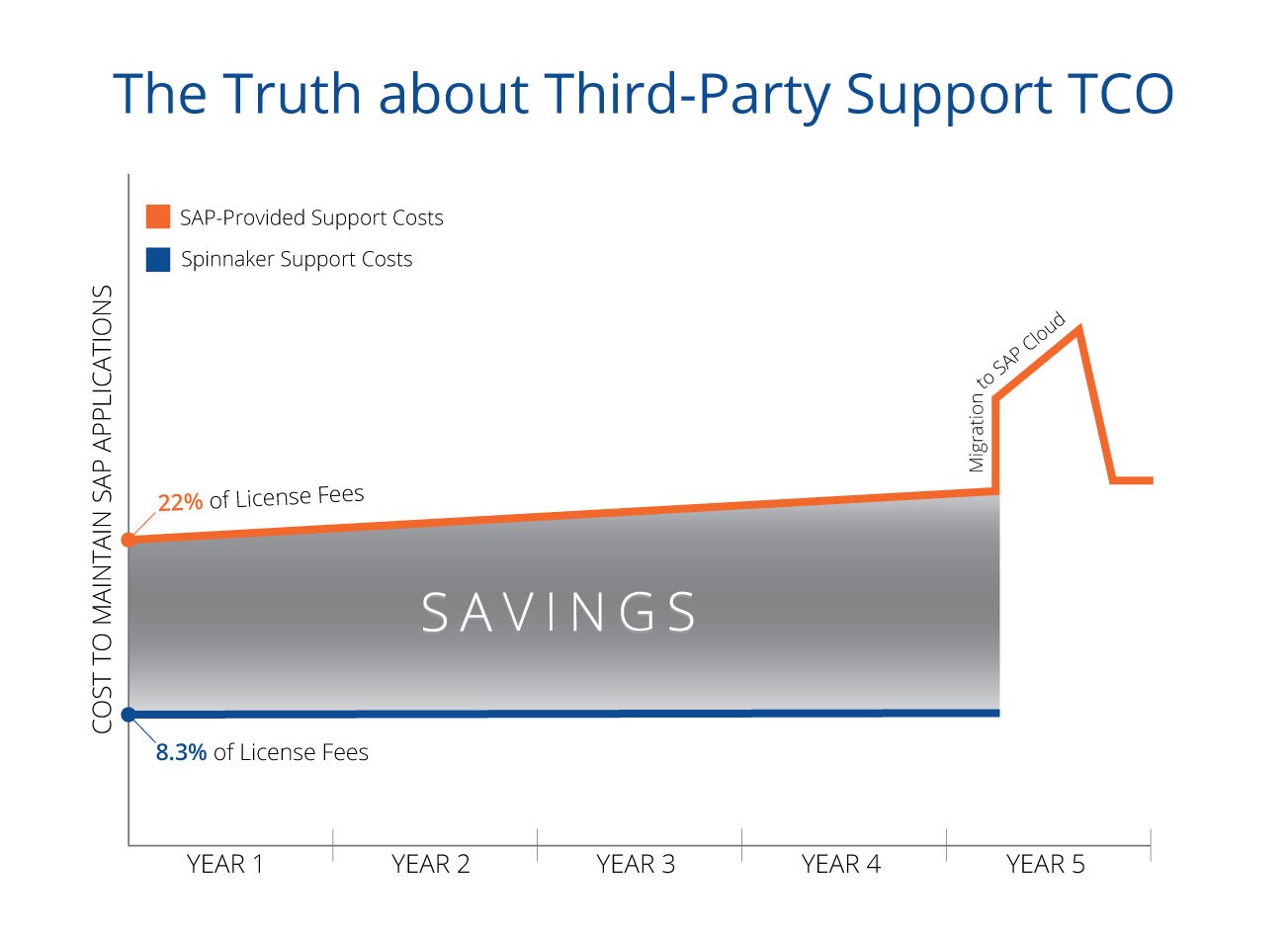
Spinnaker Support’s ‘Truth about Third-Party Support TCO’ has been proven by both dramatic cost savings and by our customer references who are 98.7% satisfied. We offer the lowest cost of ownership through more personalized, responsive support, enhanced security protection, support for integration points and customizations, and full-service technical advisory teams to enable customers to plan out and progress their future roadmap.
Conclusion
The future is bright for SAP customers, with major product and technology advancements on the horizon. Follow the lead of hundreds of SAP customers and investigate an alternate path to arrive at your future SAP landscape. If you are in discussions with SAP regarding canceling your support, we can help you counter their misleading claims and inaccurate representation of their support TCO. Don’t get talked into trading away your future lisence credits for lower on-premise support costs or for cloud subscription futures. Save your bargaining chips for when you are ready to re-engage with SAP for cloud migration.
Learn more about the myths surrounding dropping SAP-provided support – don’t get locked into another year of overpriced and underdelivered SAP-provided support.
